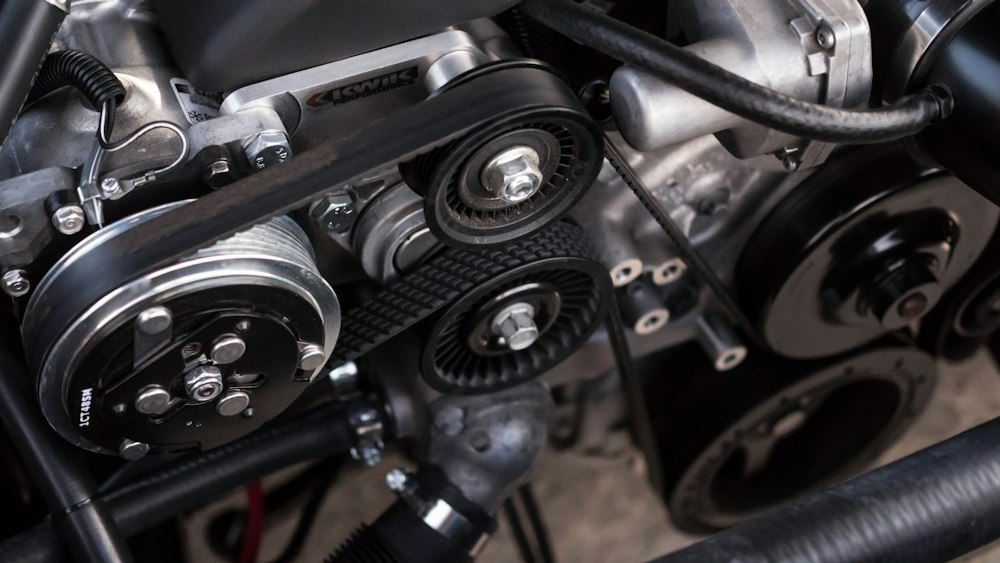Welcome to a comprehensive exploration of the various methods for cleaning Diesel Particulate Filters (DPF). As the heart of a diesel engine’s emission control system, the DPF plays a crucial role in trapping and removing particulate matter to ensure optimal performance and environmental compliance. In this guide, we will delve into diverse techniques employed for DPF cleaning, ranging from traditional approaches to advanced technologies.
Discover the intricacies of thermal regeneration, a method where elevated exhaust temperatures burn off accumulated soot. Explore the benefits and drawbacks of chemical cleaning agents designed to dissolve particulate matter. Dive into the world of pneumatic cleaning, utilizing air pressure to dislodge contaminants.
Additionally, we’ll shed light on cutting-edge methods such as hydraulic cleaning, a swift and efficient alternative to conventional processes. Join us as we navigate the landscape of DPF cleaning, providing insights into choosing the right method for your diesel vehicle’s maintenance needs. Whether you’re a seasoned mechanic or a vehicle owner seeking knowledge, this guide aims to empower you with a thorough understanding of the diverse ways to clean a DPF.
What is a DPF Filter?
A Diesel Particulate Filter (DPF) is a crucial component in the exhaust system of diesel-powered vehicles. Its primary function is to capture and reduce the emission of particulate matter (PM) or soot produced during the combustion of diesel fuel. The DPF plays a vital role in meeting stringent emission standards and regulations.
Here’s how a DPF works:
Particulate Matter Capture
As diesel fuel combusts in the engine, it generates exhaust gases that contain microscopic particles or soot. The DPF is designed to trap and collect these particulates, preventing them from being released into the atmosphere.
Regeneration
Over time, the accumulated soot in the DPF needs to be burned off to maintain its efficiency. This process, known as regeneration, involves raising the temperature of the exhaust gases to a point where the soot is oxidized and turned into ash. Regeneration can occur passively during highway driving when exhaust temperatures are naturally high or actively through various systems that increase temperatures.
Warning Systems
Modern vehicles are equipped with sensors and monitoring systems that detect the level of soot in the DPF. When the soot reaches a certain threshold, the vehicle’s onboard computer triggers regeneration or illuminates a warning light on the dashboard, indicating the need for DPF maintenance.
Regular Maintenance
Despite regeneration processes, the DPF requires periodic cleaning to remove ash and ensure optimal performance. This maintenance is crucial for preventing excessive back pressure, which can lead to engine issues if not addressed.
Why a Vehicle Might Need DPF Cleaning?
A vehicle may require Diesel Particulate Filter (DPF) cleaning due to several factors that impact its efficiency and overall performance. Understanding why a DPF cleaning is necessary is essential for maintaining a diesel engine’s health and ensuring compliance with emission standards. Here are key reasons why a vehicle might need DPF cleaning:
Accumulation of Particulate Matter
Over time, the DPF traps and accumulates soot and particulate matter from the exhaust gases. This build-up can lead to increased back pressure, restricting the flow of exhaust and impeding the engine’s efficiency.
Reduced Fuel Efficiency
A clogged DPF can hinder the proper combustion process, causing an increase in fuel consumption. Cleaning the DPF ensures optimal fuel efficiency, preventing unnecessary fuel expenditure and reducing overall operational costs.
Warning Indicators
Modern vehicles are equipped with onboard diagnostics that monitor the DPF’s condition. When the DPF becomes clogged, warning lights on the dashboard signal the need for cleaning. Ignoring these warnings can lead to more severe engine issues.
Preventing Engine Damage
If a DPF is not regularly cleaned, the increased back pressure can lead to engine damage. This is because the exhaust gases are unable to flow freely, causing stress on engine components and potentially resulting in costly repairs.
Meeting Emission Standards
Governments and environmental agencies enforce stringent emission standards. Regular DPF cleaning ensures that the vehicle complies with these regulations, reducing harmful emissions and contributing to a cleaner environment.
Maintaining Performance
A clean DPF is essential for maintaining the vehicle’s overall performance. It ensures optimal airflow, combustion, and power delivery, preventing issues like reduced acceleration and sluggish performance.
Extending DPF Lifespan
Routine cleaning prolongs the life of the DPF. Regular maintenance prevents excessive soot accumulation and potential damage, allowing the filter to function efficiently over an extended period.
Warning Signs You Need a DPF Cleaning Session!
Recognizing the warning signs that indicate the need for a Diesel Particulate Filter (DPF) cleaning session is crucial for maintaining the performance and longevity of your diesel vehicle. Ignoring these signs can lead to more severe engine issues and increased maintenance costs. Here are key warning signs that suggest it’s time for a DPF cleaning:
Dashboard Warning Lights
Modern vehicles are equipped with sophisticated onboard diagnostic systems that monitor the condition of the DPF. If the DPF becomes clogged or reaches a certain saturation level, a warning light on the dashboard will illuminate. This indicator is a clear signal that the DPF requires attention and cleaning.
Reduced Engine Power
A clogged DPF can cause a noticeable decrease in engine power and overall performance. If you experience sluggish acceleration or a lack of responsiveness, it may be attributed to restricted exhaust flow caused by a clogged DPF.
Increased Fuel Consumption
When a DPF is clogged, it disrupts the combustion process and can lead to increased fuel consumption. If you observe a sudden decrease in fuel efficiency or notice that you’re filling up the tank more frequently, it may be an indication of a clogged DPF.
Frequent Regeneration Attempts
If your vehicle’s regeneration system is working overtime, attempting to burn off soot more frequently than usual, it could be a sign that the DPF is struggling to self-clean. Continuous and unsuccessful regeneration attempts suggest that a manual cleaning session is necessary.
Exhaust Smoke
An unusually high amount of smoke coming from the exhaust, especially if it appears darker than normal, can be indicative of a clogged DPF. The inability to efficiently filter particulate matter can lead to more visible emissions.
Unusual Smells
A clogged DPF may result in the retention of unburned particulate matter, causing unusual odors from the exhaust. If you notice persistent and unpleasant smells, it’s a sign that the DPF may need cleaning.
High Exhaust Back Pressure
Elevated back pressure in the exhaust system can occur when the DPF is clogged. This increased pressure can strain engine components, leading to potential damage if left unaddressed.
Warning in Owner’s Manual
Refer to your vehicle’s owner’s manual for specific guidelines on DPF maintenance intervals. If the manual recommends regular cleaning at certain mileage intervals, it’s essential to adhere to these recommendations to prevent issues.
Exploring the Top Methods for Diesel Particulate Filter (DPF) Cleaning
Diesel vehicles play a pivotal role in various industries, providing robust performance and fuel efficiency. However, as diesel engines operate, they produce particulate matter that can compromise both performance and environmental standards. Enter the Diesel Particulate Filter (DPF), a critical component designed to capture and reduce these emissions. Over time, a DPF can become clogged with soot and require cleaning to maintain optimal functionality. In this comprehensive guide, we will delve into the top methods for cleaning a DPF, ranging from traditional approaches to cutting-edge technologies.
Thermal Regeneration
Thermal regeneration is a widely used method for cleaning DPFs, especially in highway-driven vehicles. This process relies on elevated exhaust temperatures to burn off accumulated soot within the filter.
During normal driving conditions, the exhaust gases reach sufficiently high temperatures, initiating the regeneration process. The heat generated oxidizes the soot, turning it into ash, which is then expelled from the DPF. This method is effective for preventing excessive soot build-up, particularly during extended highway drives.
Pros
- Passive process during regular driving.
- No additional equipment is needed.
- Helps maintain DPF efficiency.
Cons
- It may not be as effective for city-driven vehicles with lower exhaust temperatures.
- Limited control over the regeneration process.
Chemical Cleaning Agents
Chemical cleaning agents are another method employed to dissolve and remove soot and contaminants from the DPF. These agents are typically added to the fuel or introduced into the exhaust system.
The chemical agents interact with the accumulated soot, breaking it down into smaller particles that can be expelled through the exhaust system. This method is often used in conjunction with thermal regeneration to enhance cleaning effectiveness.
Pros
- It can be applied as a preventive measure during regular maintenance.
- Suitable for city-driven vehicles with lower exhaust temperatures.
- Addresses a wide range of contaminants.
Cons
- It may require multiple applications for heavily clogged filters.
- Some chemical agents may be harsh on the DPF substrate.
Pneumatic Cleaning
Pneumatic cleaning, also known as air cleaning, involves using compressed air to dislodge and remove accumulated soot from the DPF.
A specialized pneumatic cleaning tool is connected to the DPF, and high-pressure air is applied to break loose the soot particles. The dislodged particles are then blown out of the filter, restoring its airflow and efficiency.
Pros
- Can be effective for moderately clogged filters.
- Removes soot without the need for heat.
- Versatile and applicable to various DPF sizes.
Cons
- May not be as effective for heavily clogged filters.
- Requires specialized equipment.
Hydraulic Cleaning
Hydraulic cleaning is an advanced method that employs a high-pressure liquid, typically water, to break down and remove accumulated soot and contaminants from the DPF.
A specialized hydraulic cleaning tool is connected to the DPF, and high-pressure water is applied to dislodge and flush out the soot. This method is known for its efficiency and speed, requiring as little as 30 minutes to thoroughly clean a DPF.
Pros
- Swift and efficient cleaning process.
- Does not pose the risk of cracking filters.
- Effective for heavily clogged filters.
Cons
- Requires specialized equipment.
- Limited availability compared to traditional methods.
Baking Process
The baking process is a traditional method that involves removing the DPF from the vehicle and subjecting it to high temperatures in an oven-like device.
The DPF is heated to extreme temperatures, typically around 600-700 degrees Celsius (1112-1292 degrees Fahrenheit). This intense heat oxidizes and burns off the accumulated soot, leaving behind ash, which is then blown out of the filter.
Pros
- Effective for heavily clogged filters.
- Can address a wide range of contaminants.
- No specialized liquid or chemicals are required.
Cons
- Time-consuming, typically taking around 12 hours.
- Requires the removal of the DPF from the vehicle.
- The high temperature may pose a risk of filter cracking.
Choosing the Right Method
Selecting the appropriate method for cleaning a DPF depends on various factors, including the level of soot accumulation, the vehicle’s driving patterns, and the availability of specific equipment. For routine maintenance and preventive cleaning, chemical agents or pneumatic cleaning may suffice. In contrast, for heavily clogged filters, especially in commercial vehicles or those used for extended periods without highway driving, more robust methods such as hydraulic cleaning or the baking process may be necessary.
Top Qualities To Look For In Professional DPF Cleaners
Choosing the right professional DPF cleaner is crucial for ensuring effective and reliable maintenance of your Diesel Particulate Filter (DPF). Here are the top qualities to look for in professional DPF cleaners:
Expertise and Experience
Seek professionals with a proven track record in DPF cleaning. Experience indicates a deep understanding of various DPF systems, different vehicle models, and the ability to handle diverse cleaning challenges.
Specialized Equipment
Professional DPF cleaners should have access to specialized cleaning equipment, such as hydraulic cleaning systems, pneumatic cleaning tools, and advanced diagnostic equipment. This ensures thorough and efficient cleaning tailored to the specific needs of your DPF.
Diagnostic Capabilities
Look for cleaners who can perform comprehensive diagnostics to identify the root causes of DPF issues. A thorough understanding of diagnostic results helps in implementing targeted and effective cleaning solutions.
Certifications and Training
Certifications and ongoing training in DPF cleaning and emission control systems demonstrate a commitment to staying current with industry standards and best practices. Check for certifications from relevant authorities or industry associations.
Knowledge of DPF Technologies
The best DPF cleaners are well-versed in various DPF technologies and cleaning methods. They should be able to adapt their approach based on the type of filter, the vehicle model, and the severity of soot accumulation.
Supercharge Your Diesel Vehicle’s Vitality at 30 Minute DPF Clean
With 30 minute DPF Clean, ignite peak performance with our rapid 30-minute hydraulic cleaning, outshining the conventional 12-hour methods. From catalytic converter unclogging to tailored DEF/DPF cleaner additives, we’ve got your diesel needs covered. Walk-ins welcome – witness the transformation firsthand as we restore your filter’s efficiency.
For professional DPF cleaning, consider reaching out to 30 Minute DPF Cleaning, experts in DPF cleaning services, ensuring thorough and effective cleaning for your vehicle’s DPF.
Concerned about truck DPF filter cleaning costs? Call or text us for a personalized quote. Explore our blog or consult our tech experts for top-notch maintenance tips.





